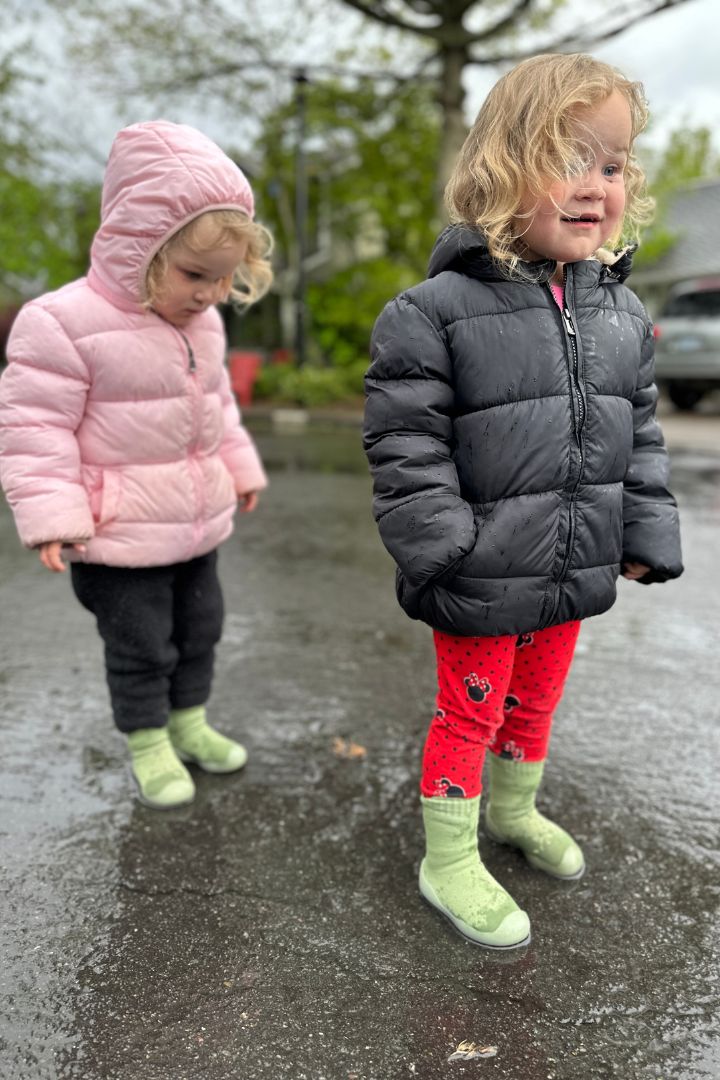

· By Tyler Stelter
Water-Resistant vs. Waterproof: Finding the Right Footwear for Infants and Toddlers
Introduction:
Selecting the appropriate footwear for infants and toddlers requires careful consideration, particularly when it comes to addressing wet conditions. Understanding the distinction between water-resistant and waterproof materials is crucial for ensuring the comfort and protection of your little one's feet. In this blog post, we will delve into the difference between water-resistant and waterproof options, and highlight why a water-resistant sock shoe can be a suitable choice for infants and toddlers.
Water-Resistant vs. Waterproof:
Water-Resistant:
Water-resistant materials have the capacity to repel water to some extent, offering a degree of protection against moisture. Although not completely impervious to water, water-resistant footwear provides adequate resistance to rain, splashes (puddle jumping!), or exposure to damp environments. For infants and toddlers, whose activities often involve exposure to wet conditions, water-resistant sock shoes can offer ample protection however there are more protective alternatives in cases of prolonged exposure to wet environments.
Waterproof:
Waterproof materials create an effective barrier against water penetration, preventing it from reaching the foot. Waterproof footwear is specifically designed to withstand prolonged exposure to wet environments, making them suitable for activities like hiking through streams or braving heavy rain. However, it is important to note that truly waterproof sock shoes are currently not available due to certain limitations.
Water-Resistant Sock Shoes for Infants and Toddlers:
For the youngest adventurers, water-resistant sock shoes serve as a practical and comfortable option. Here's why:
1. Light Moisture Protection:
Infants and toddlers often engage in activities where they encounter light moisture, such as walking on damp grass or splashing in shallow puddles. Water-resistant sock shoes provide sufficient protection for these scenarios. They keep the feet dry while allowing the little ones to explore their surroundings comfortably.
2. Flexibility and Mobility:
The soft and stretchy nature of water-resistant sock shoes ensures that your child's feet have ample freedom of movement. Unlike waterproof footwear (like traditional rain boots), which may be bulkier or less flexible, water-resistant sock shoes mimic the sensation of being barefoot. This flexibility supports the natural development of their feet, allowing them to build strength and balance as they navigate their environment.
3. Breathability and Comfort:
Infant and toddler feet require breathability and comfort to maintain healthy conditions. Water-resistant sock shoes are typically crafted from breathable materials, ensuring good ventilation and reducing the risk of excessive sweating or discomfort. The soft fabric of these shoes also eliminates the potential for rubbing or pressure points, providing a cozy and irritation-free experience for your child.
4. Easy Slip-on Design:
Getting shoes on and off an infant or toddler can be a challenging task, particularly when they are wriggly or on the move. Water-resistant sock shoes offer the convenience of a slip-on design, eliminating the need for complicated laces or buckles. With their stretchy and elastic openings, these shoes can be effortlessly slipped onto your child's feet, saving you time and frustration.